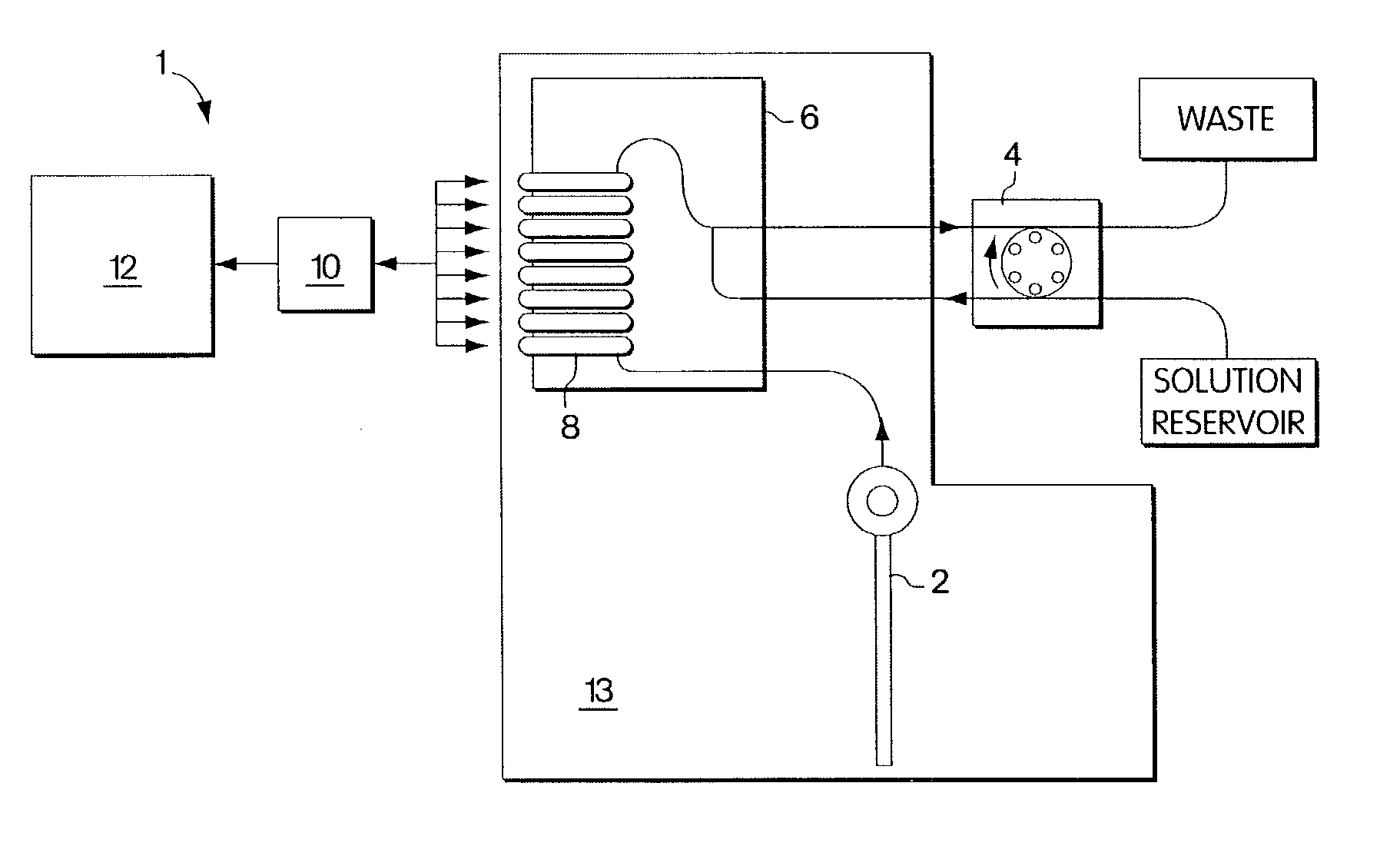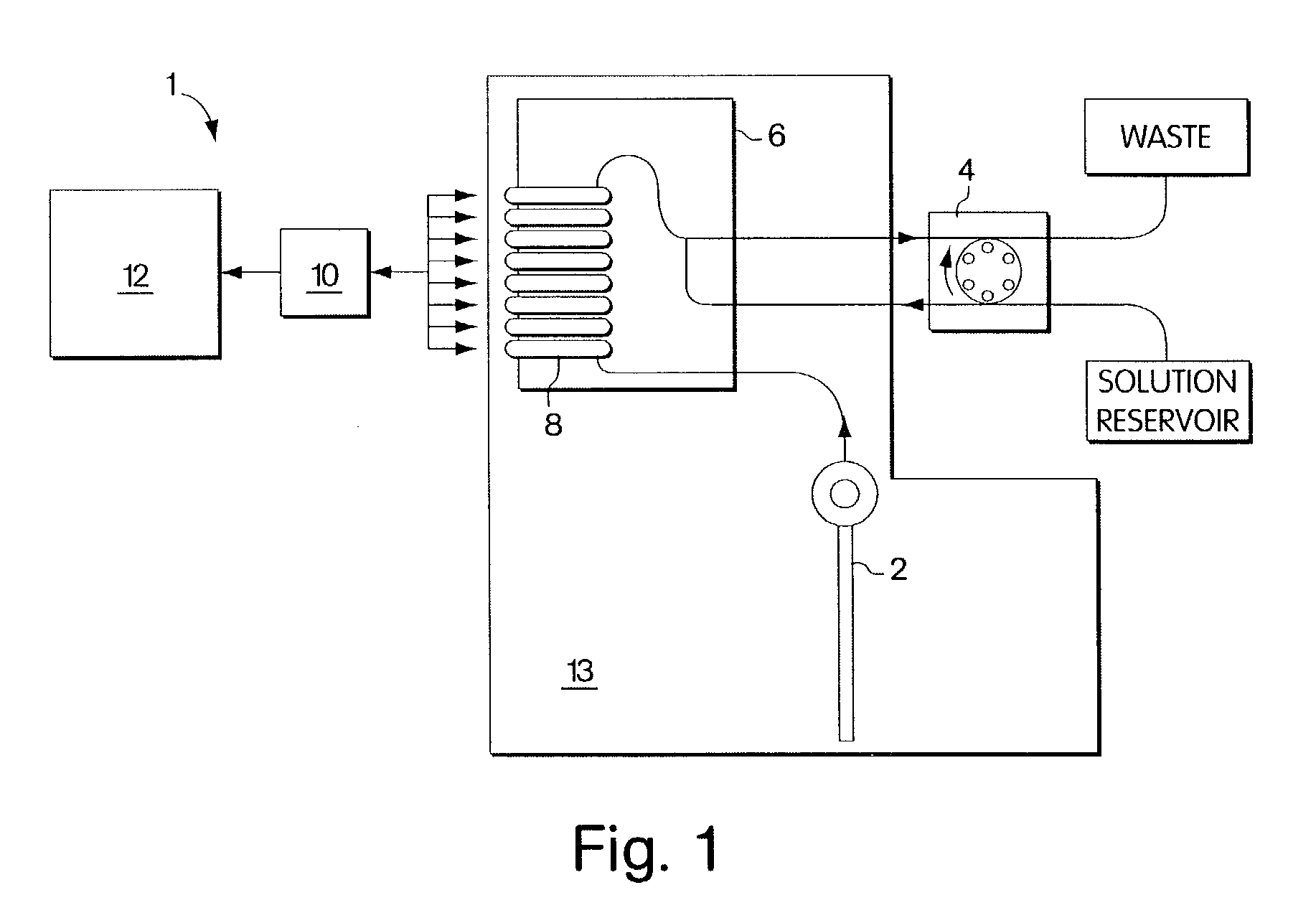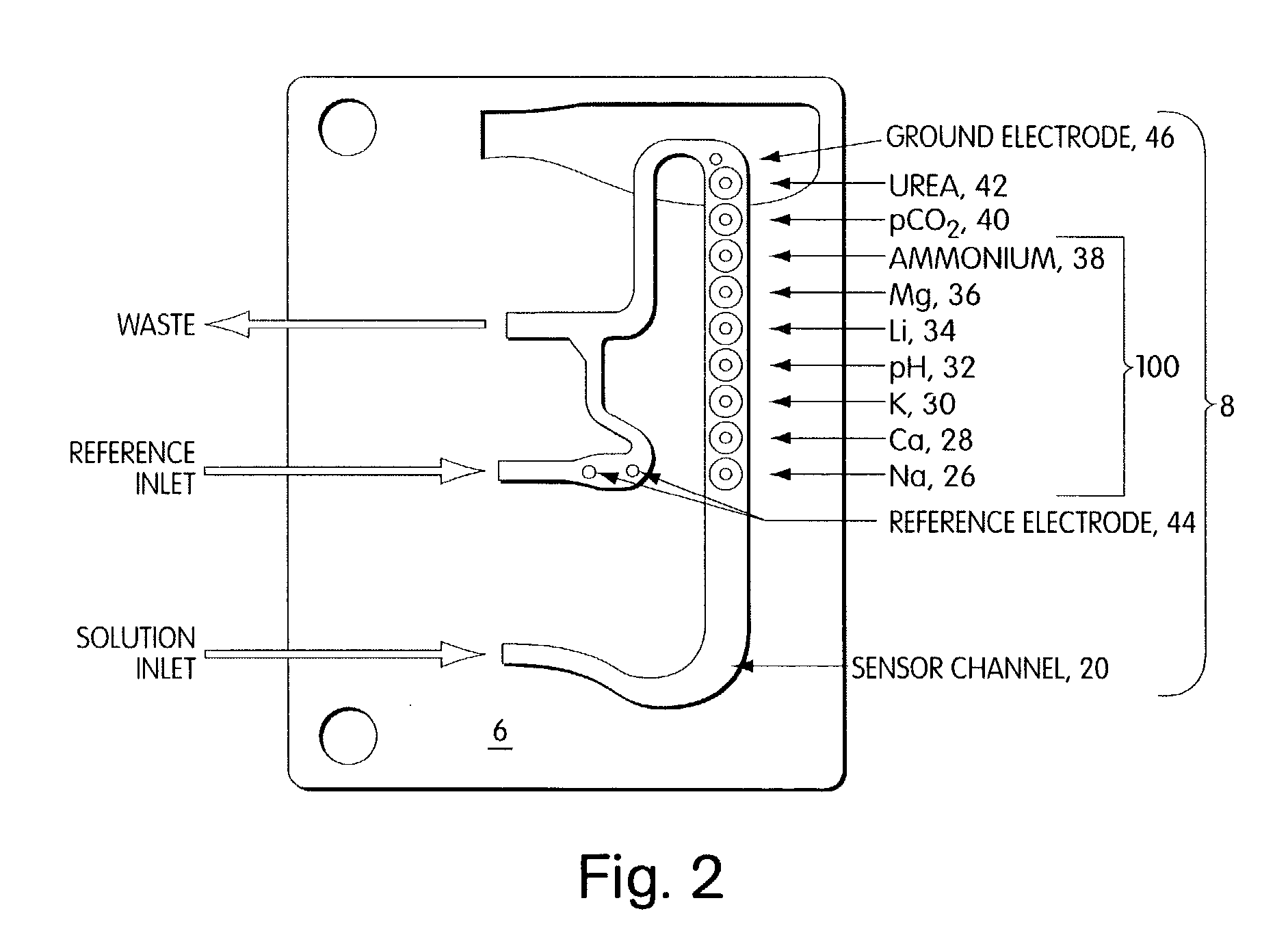Polymeric membranes for use in electrochemical sensors
a technology of polymeric membranes and electrochemical sensors, which is applied in the direction of liquid/fluent solid measurement, material electrochemical variables, instruments, etc., can solve the problem of compromising the accuracy of electrochemical sensors
- Summary
- Abstract
- Description
- Claims
- Application Information
AI Technical Summary
Benefits of technology
Problems solved by technology
Method used
Image
Examples
example 2
[0053] FIG. 9 is a graphical representation of the chronopotentiometric responses recorded from an electrode card including a potassium ISE with a polymeric membrane containing HMW--PVC. An analytical sample containing a known concentration of potassium was introduced to the electrode card, and the ISE measured the concentration of potassium to be 3.2 mM. At time t, the analytical sample was changed to a solution containing the same concentration of potassium plus 10 mg / dL thiopental, and the ISE returned a potassium concentration value of 2.8 mM.
[0054] FIG. 10 is a graphical representation of the chronopotentiometric responses recorded from an electrode card including five potassium ISEs with polymeric membranes containing PVC--COOH according to the invention. An analytical sample containing a known concentration of potassium was introduced to the electrode card, and all five ISEs measured the concentration of potassium to be 3.3 mM. At time t, the analytical sample was changed to ...
example 3
[0055] FIG. 11 is a graphical representation of the chronopotentiometric responses recorded from an electrode card including a calcium ISE with polymeric membrane containing HMW--PVC. An analytical sample containing a known concentration of calcium was introduced to the electrode card, and the ISE measured the concentration of calcium to be 0.93 mM. At time t, the analytical sample was changed to a solution containing the same concentration of calcium plus 10 mg / dL thiopental, and the ISE returned a calcium concentration value of 0.81 mM.
[0056] FIG. 12 is a graphical representation of the chronopotentiometric responses recorded from an electrode card including five calcium ISEs with polymeric membranes containing PVC--COOH according to the invention. An analytical sample containing a known concentration of calcium was introduced to the electrode card, and all five ISEs measured the concentration of calcium to be 0.87 mM. At time t, the analytical sample was changed to a solution con...
example 4
[0057] FIG. 13 is a graphical representation of the chronopotentiometric responses recorded from an electrode card including a pH electrode with a polymeric membrane containing HMW--PVC. An analytical sample containing a buffer solution of known pH was introduced to the electrode card, and the electrode measured the pH to be 7.63. At time t, the analytical sample was changed to a solution containing the same buffer solution plus 10 mg / dL thiopental, and the electrode returned a pH value of 7.68.
[0058] FIG. 14 is a graphical representation of one of the chronopotentiometric responses recorded from an electrode card including five pH electrodes with polymeric membranes containing PVC--COOH according to the invention. An analytical sample containing a buffer solution of known pH was introduced to the electrode card, and all five electrodes measured the pH to be 7.66. At time t, the analytical sample was changed to a solution containing the same buffer solution plus 10 mg / dL thiopental,...
PUM
| Property | Measurement | Unit |
|---|---|---|
| mass | aaaaa | aaaaa |
| concentration | aaaaa | aaaaa |
| partial pressure | aaaaa | aaaaa |
Abstract
Description
Claims
Application Information
 Login to View More
Login to View More - R&D
- Intellectual Property
- Life Sciences
- Materials
- Tech Scout
- Unparalleled Data Quality
- Higher Quality Content
- 60% Fewer Hallucinations
Browse by: Latest US Patents, China's latest patents, Technical Efficacy Thesaurus, Application Domain, Technology Topic, Popular Technical Reports.
© 2025 PatSnap. All rights reserved.Legal|Privacy policy|Modern Slavery Act Transparency Statement|Sitemap|About US| Contact US: help@patsnap.com



